France June 2016 - Chateau du Chenonceau
|
|
I will let Rick Steves say it: "Chenonceau is the toast of the Loire. This 16th-century Renaissance palace arches gracefully over the Cher River and is one of the most-visited chateaux in France. Chenonceau was the first great pleasure palace."
I had read a lot about Chenonceau and was looking forward to finally seeing it. We arrived right when the Chateaux opened and had no problems getting in. This is the path from the parking lot to the Chateau.
|
| |
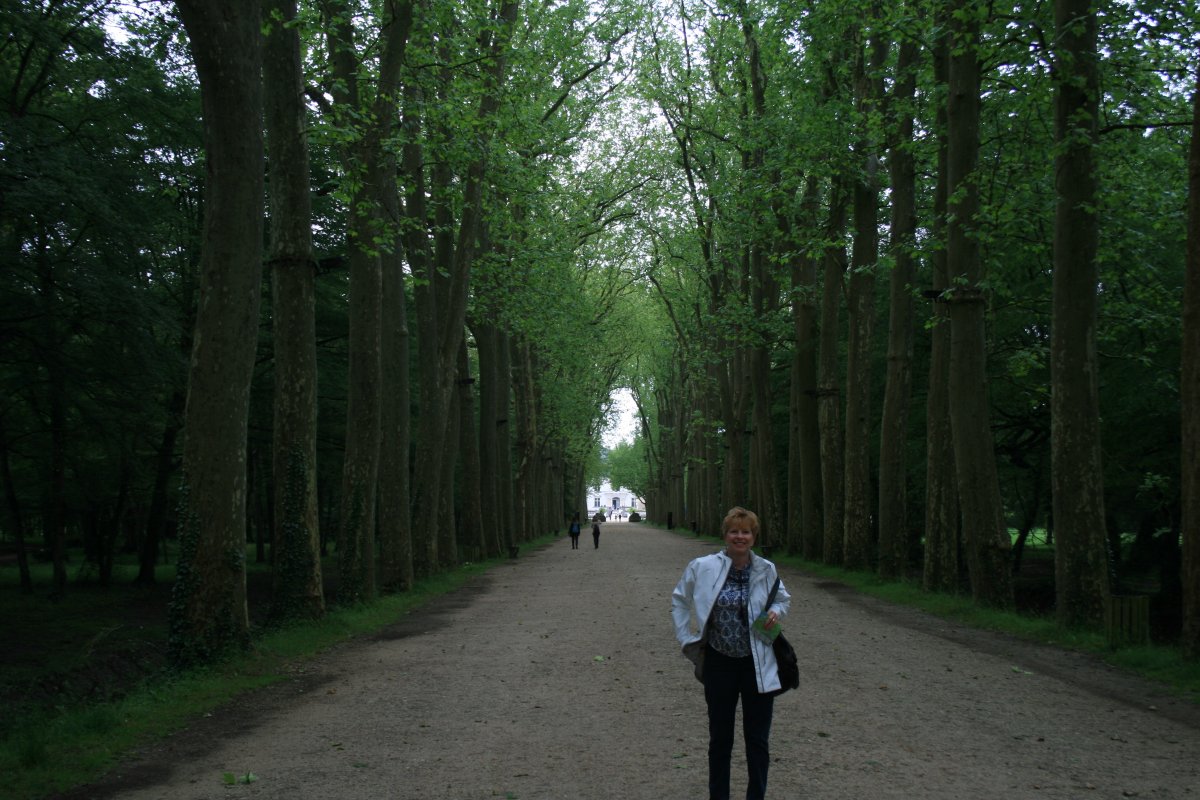 |
|
"The original owner, Thomas Bohier, was away on the king's business so much that his wife, Katherine Briconnet, made most of the design decisions during construction of the main chateau (1513-1521). In 1547, King Henry II gave the chateau to his mistress, Diane de Poitiers, who added an arched bridge across the river to access the hunting grounds. She enjoyed her lovely retreat until Henry II was pierced in a jousting tournament in Paris and died; his vengeful wife, Catherine de Medicis, unceremoniously kicked Diane out of Chenonceau. Catherine added the three-story structure on Diane's bridge." |
| |
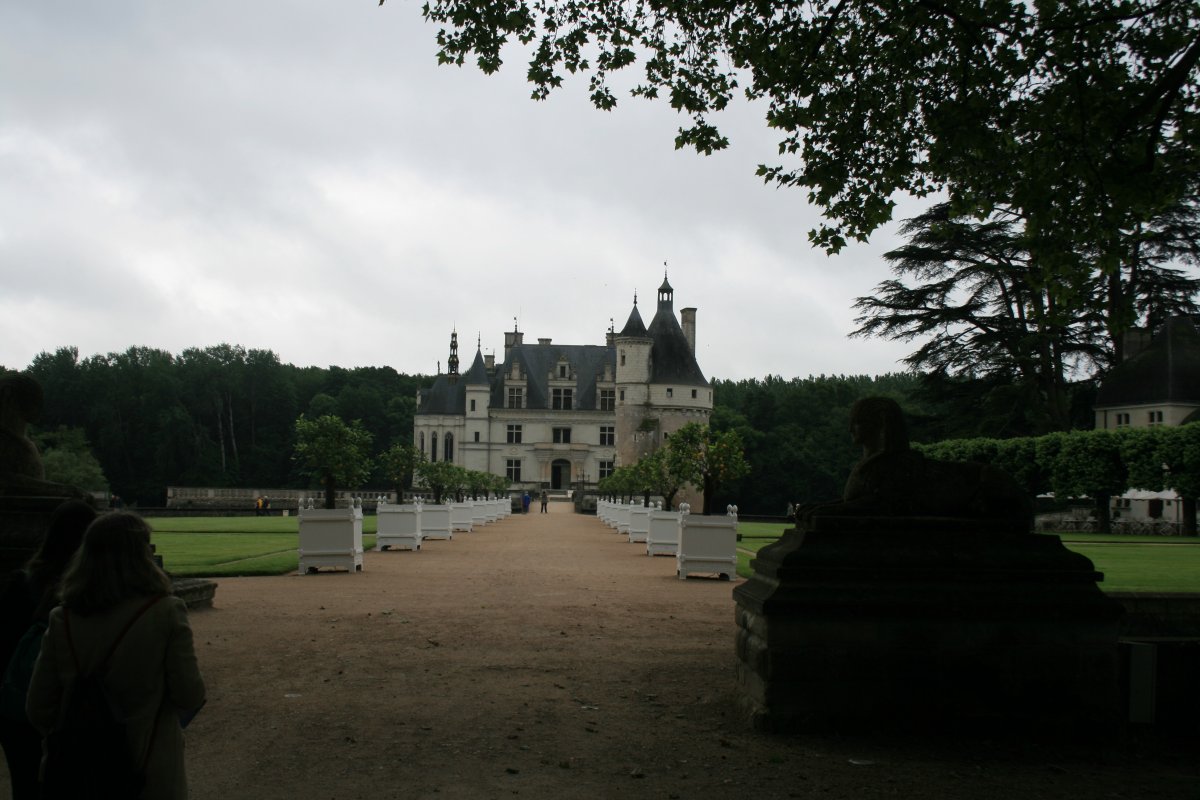 |
|
|
Unfortunately, it was kind of an overcast and dreary day, the river Cher was dark olive-drab, but in spite of this Chenonceau was still impressive.
Diane de Poitiers (1499 – 1566) was a French noblewoman and a prominent courtier at the courts of King Francis I of France and his son, Henry II. She became notorious as King Henry's chief mistressand in this role she wielded much influence and power at the French Court, which continued until Henry was mortally wounded in a tournament accident. It was during that tournament that his lance wore her favour (ribbon) rather than his wife's. A noted beauty, she maintained her good looks well into her fifties, and her appearance was immortalized in sculpture and paintings. -- Wikipedia
|
| |
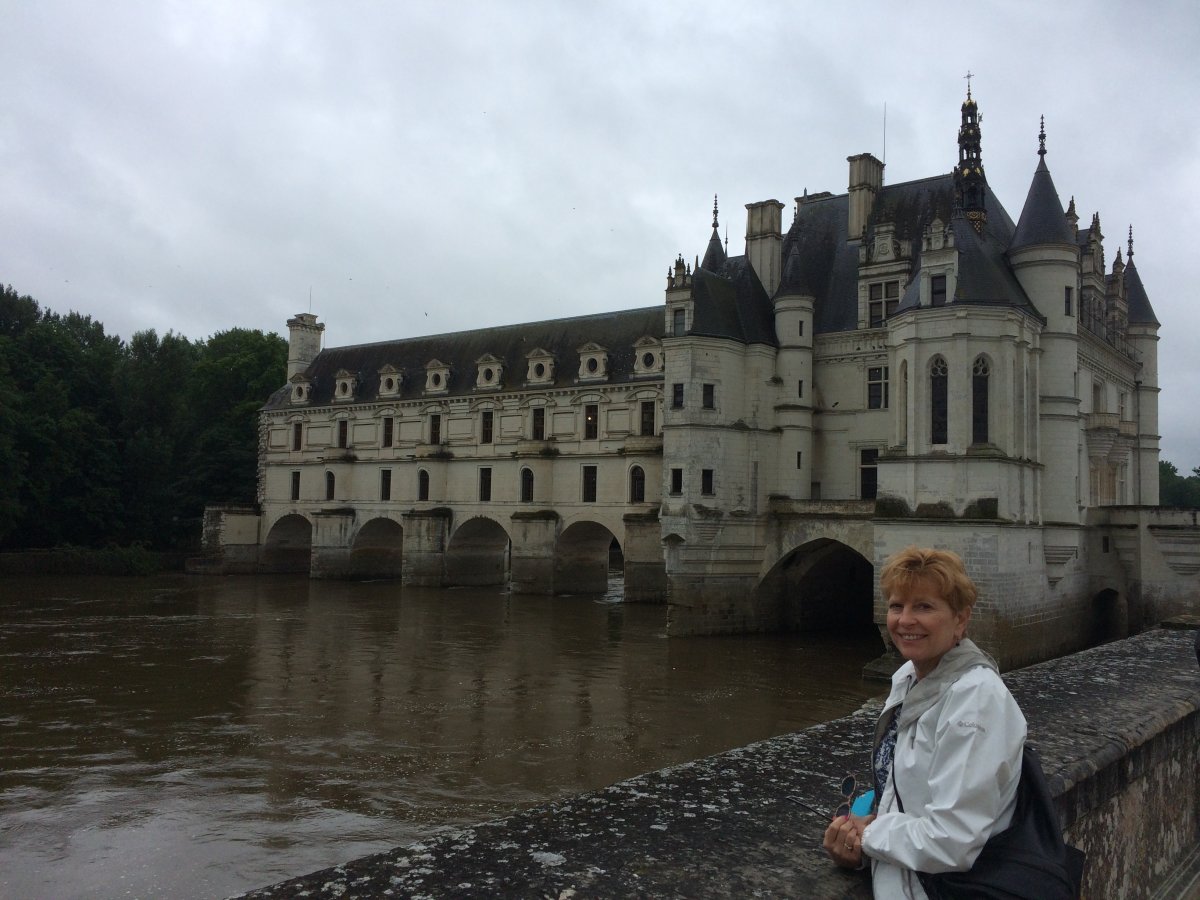 |
|
|
"There is no disagreement over the fact that Diane was beautiful by looking at her portrait in the Francis I room at Chenonceau [pictured here]. For the 12 years that Henry II was king, Diane practically ruled France." Despite wielding such power over the king, Diane's status depended on the king's welfare and remaining in power. After Henry II died, Catherine de' Medici illegally took over Chenonceau, in exchange for Catherine's Château de Chaumont. Diane stayed there only a short time, and she lived out her remaining years in her château in Anet, Eure-et-Loir, where she lived in comfortable obscurity as a virtual exile. "Although some of Anet, outside Paris, has been destroyed, it is a lovely place to visit on a Sunday afternoon." - Ina Caro with some Wikipedia thrown in
Catherine was a contemporary of Queen Elizabeth I of England.
|
| |
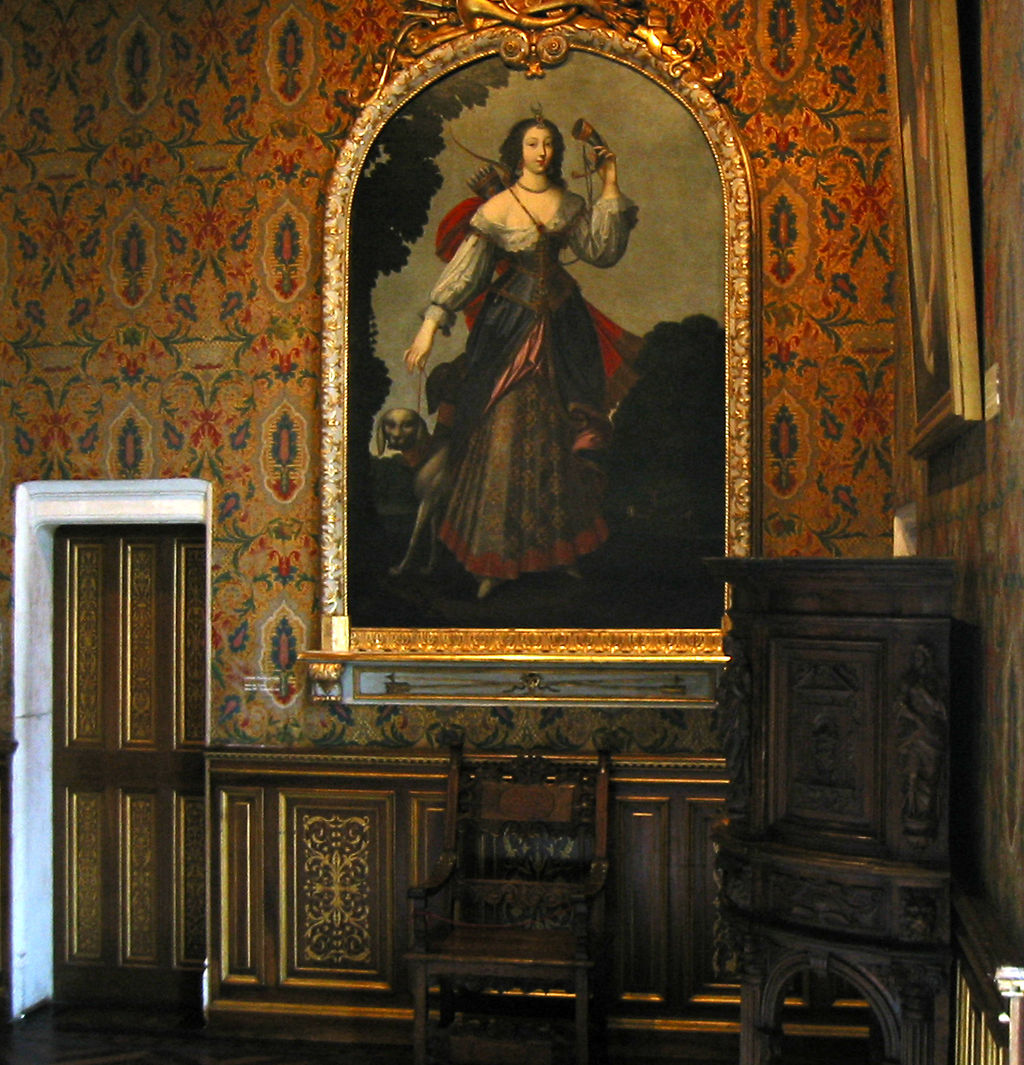 |
|
| The view from the other side. |
| |
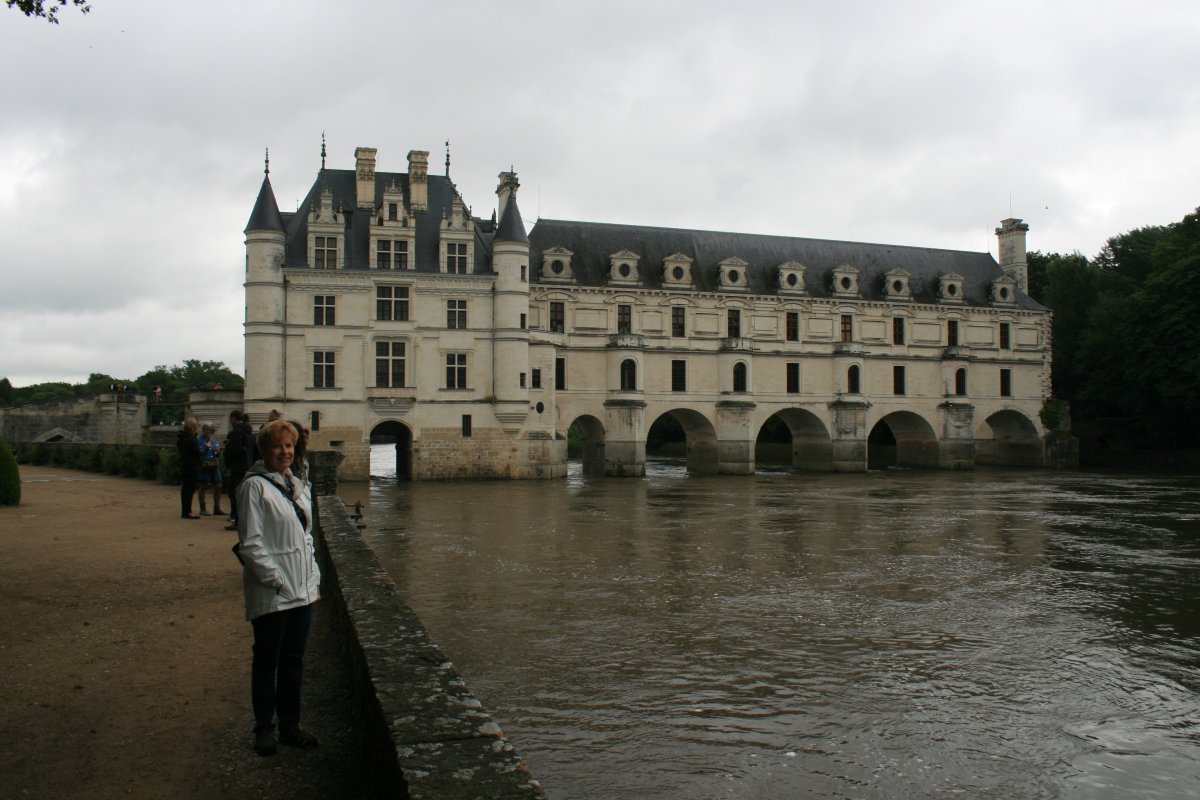 |
|
| With a little green thrown in. |
| |
 |
|
| A sculptured garden on the other side. |
| |
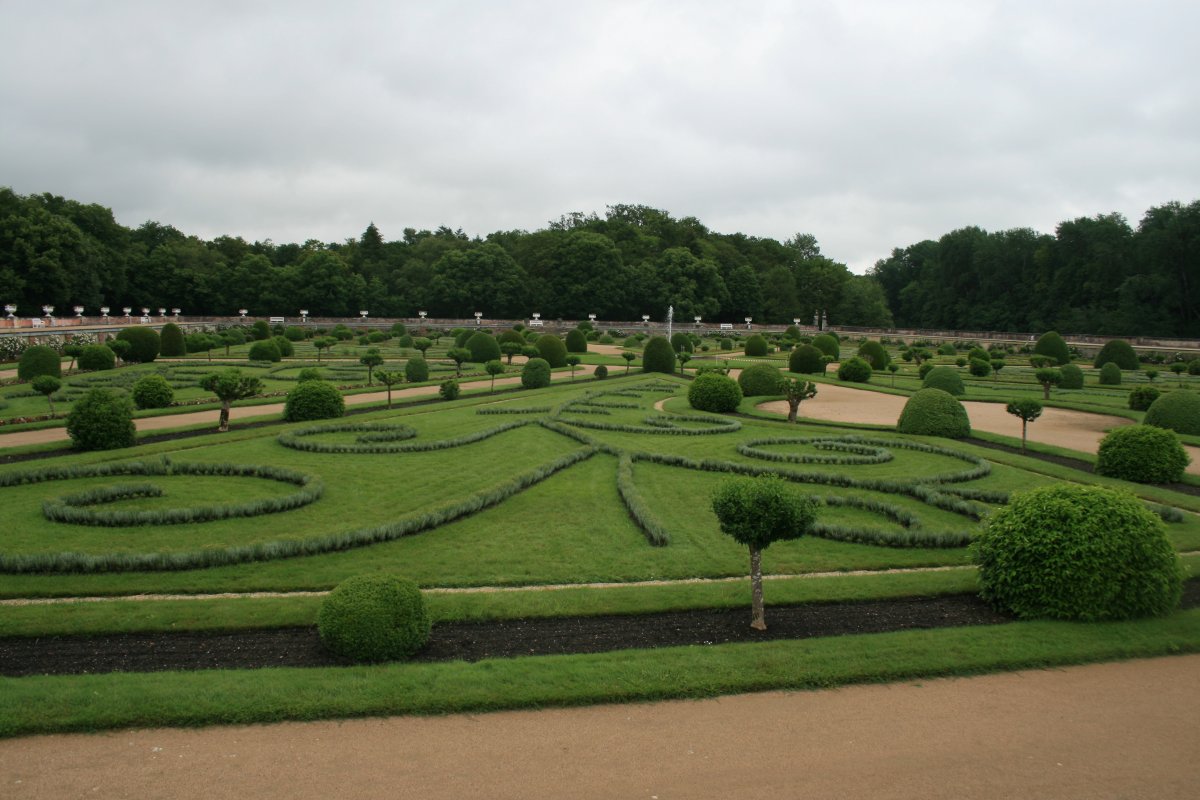 |
|
|
|
| |
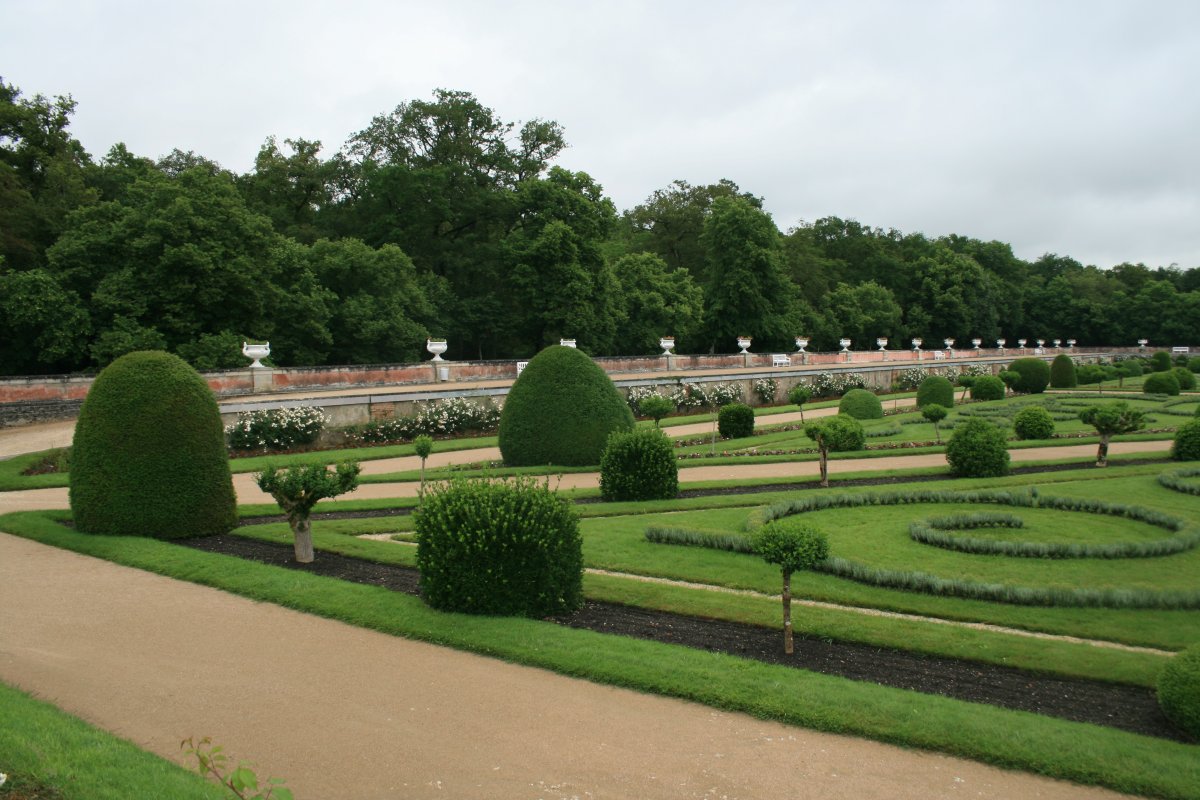 |
|
| The River Cher. |
| |
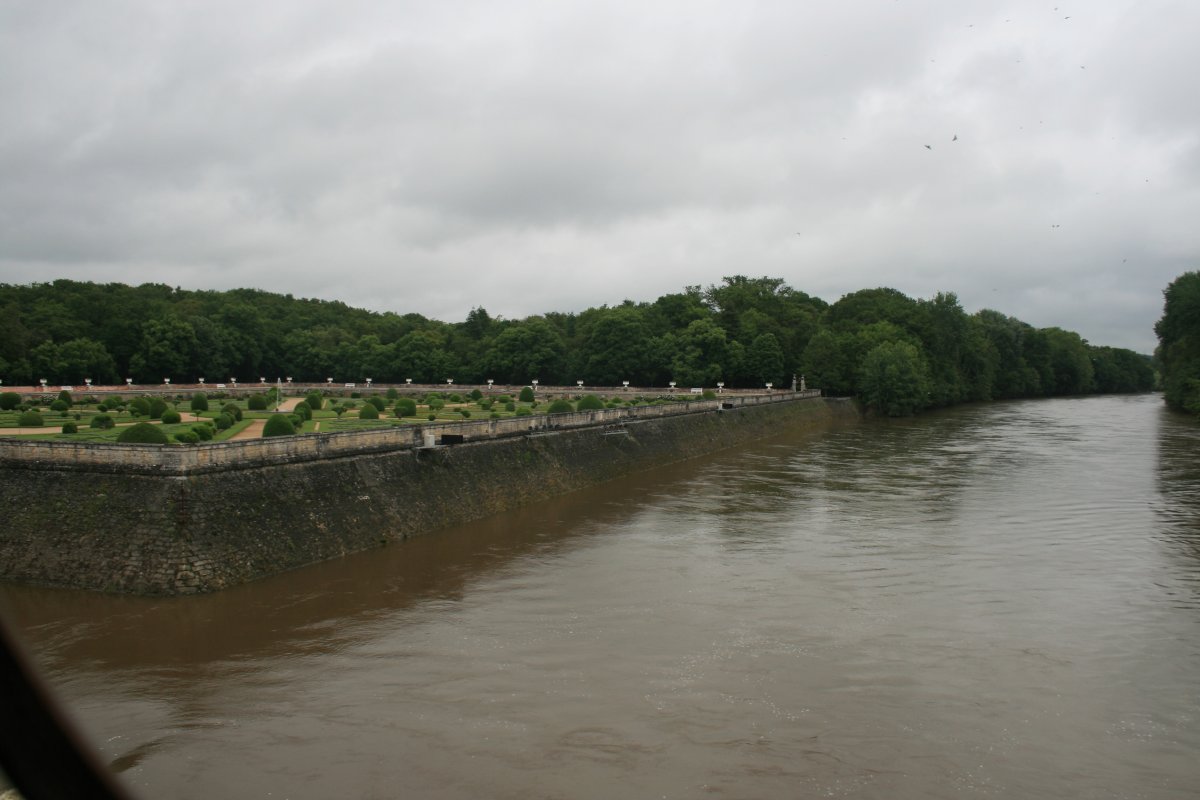 |
|
|
The garden from the river.
|
| |
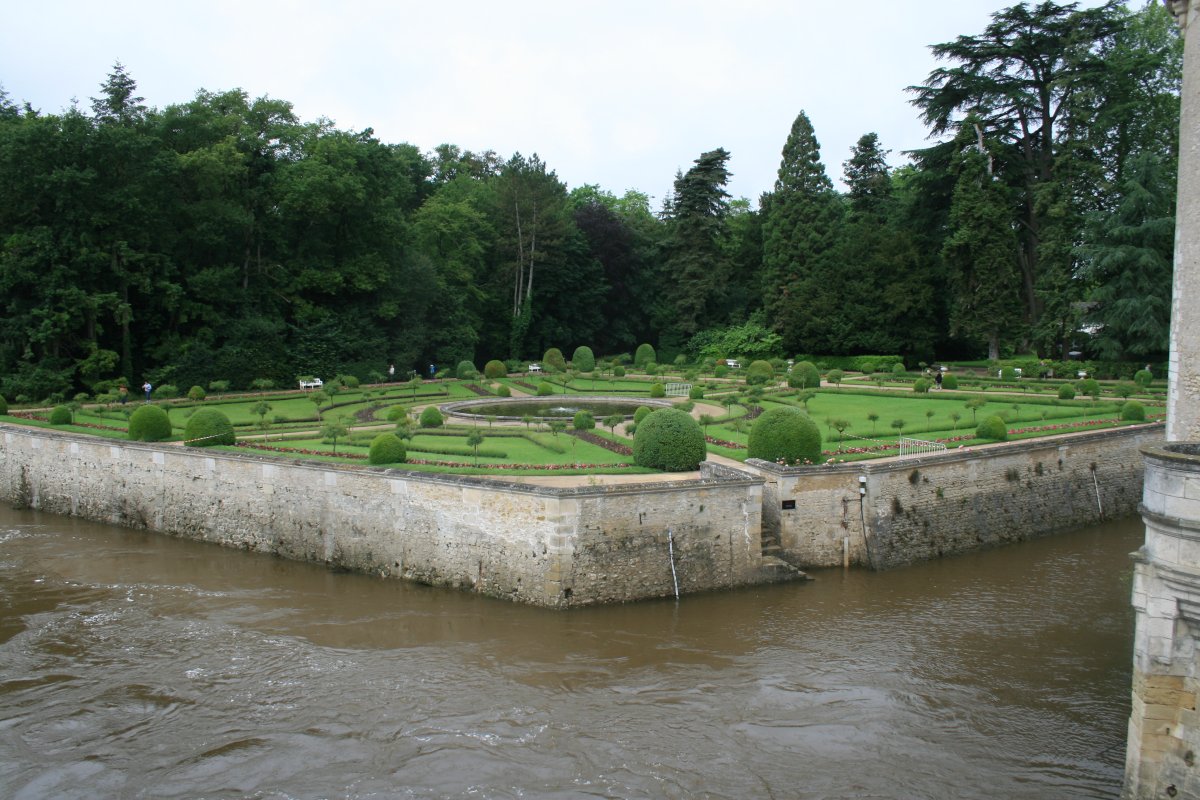 |
|
| |
| |
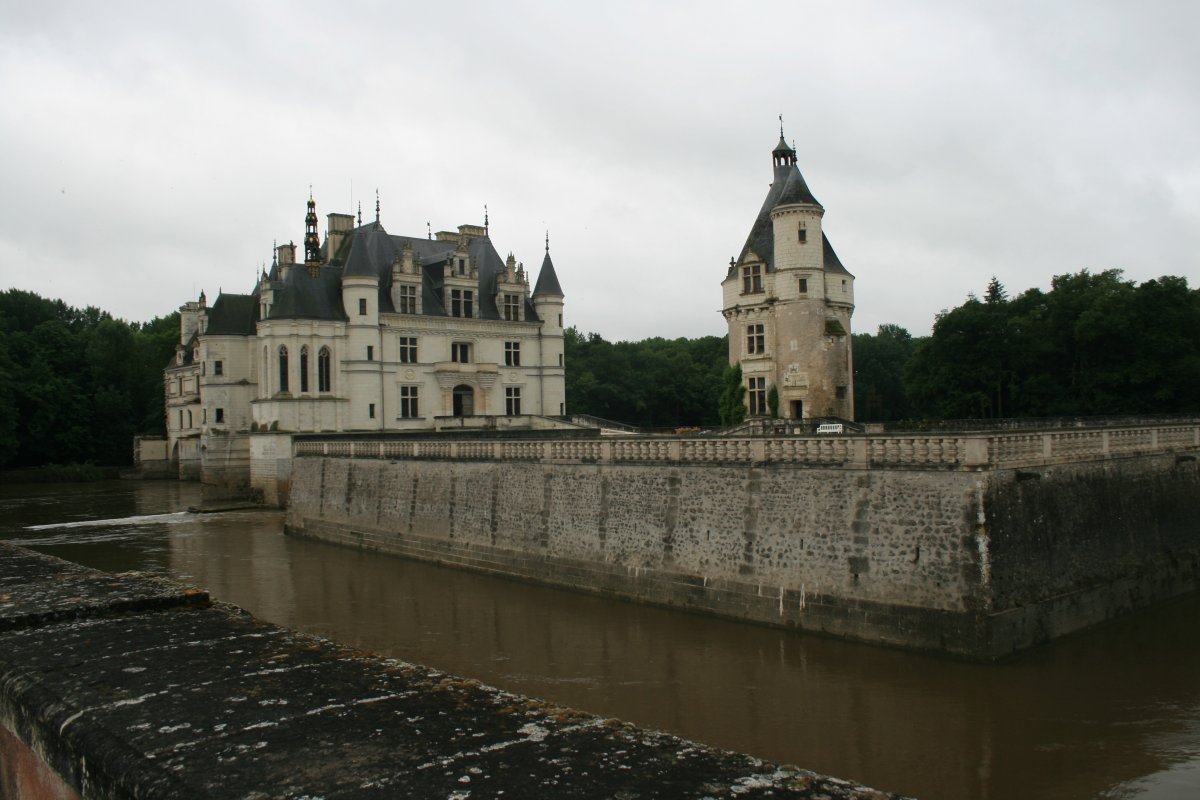 |
|
|
During World War II, the River Char marked the border between the collaborationist Vichy government and Nazy-controlled France. Prisoners were swapped between the two sides at Chenonceaux.
|
| |
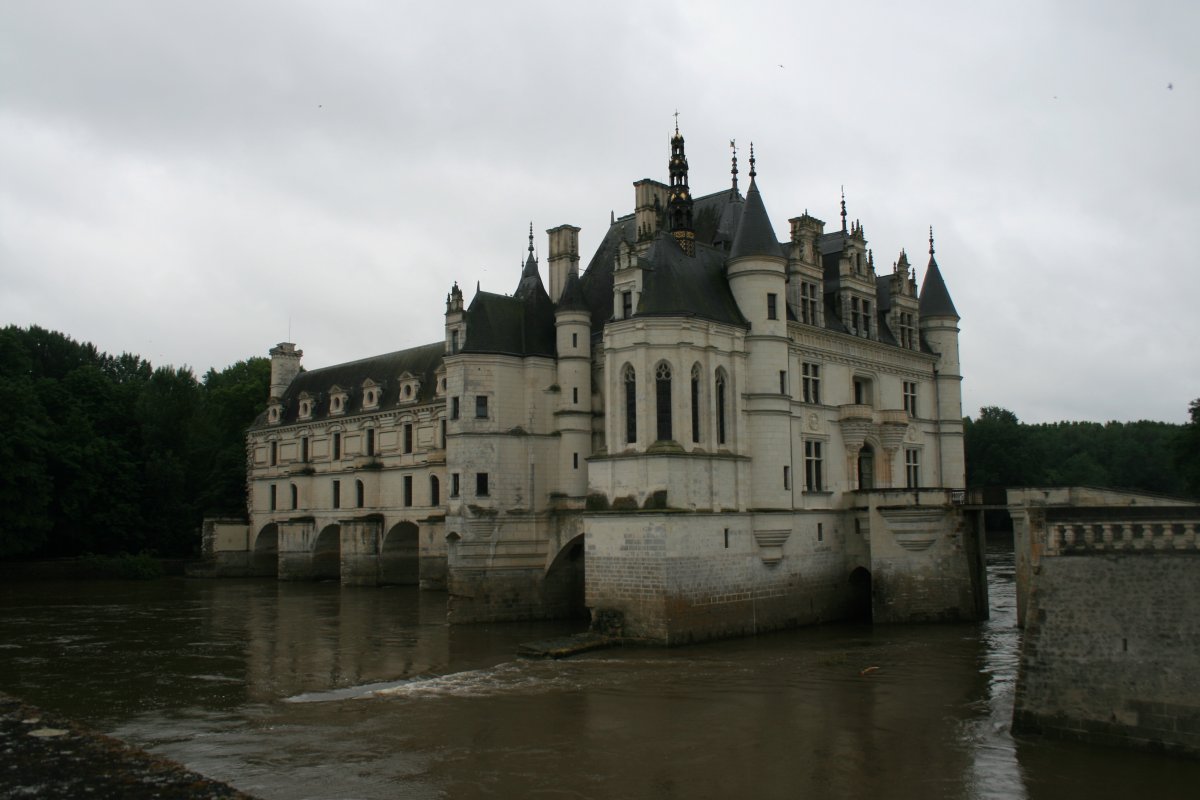 |
|
|
Aerial view of Chenonceaux - photo by Spsergio.
|
| |
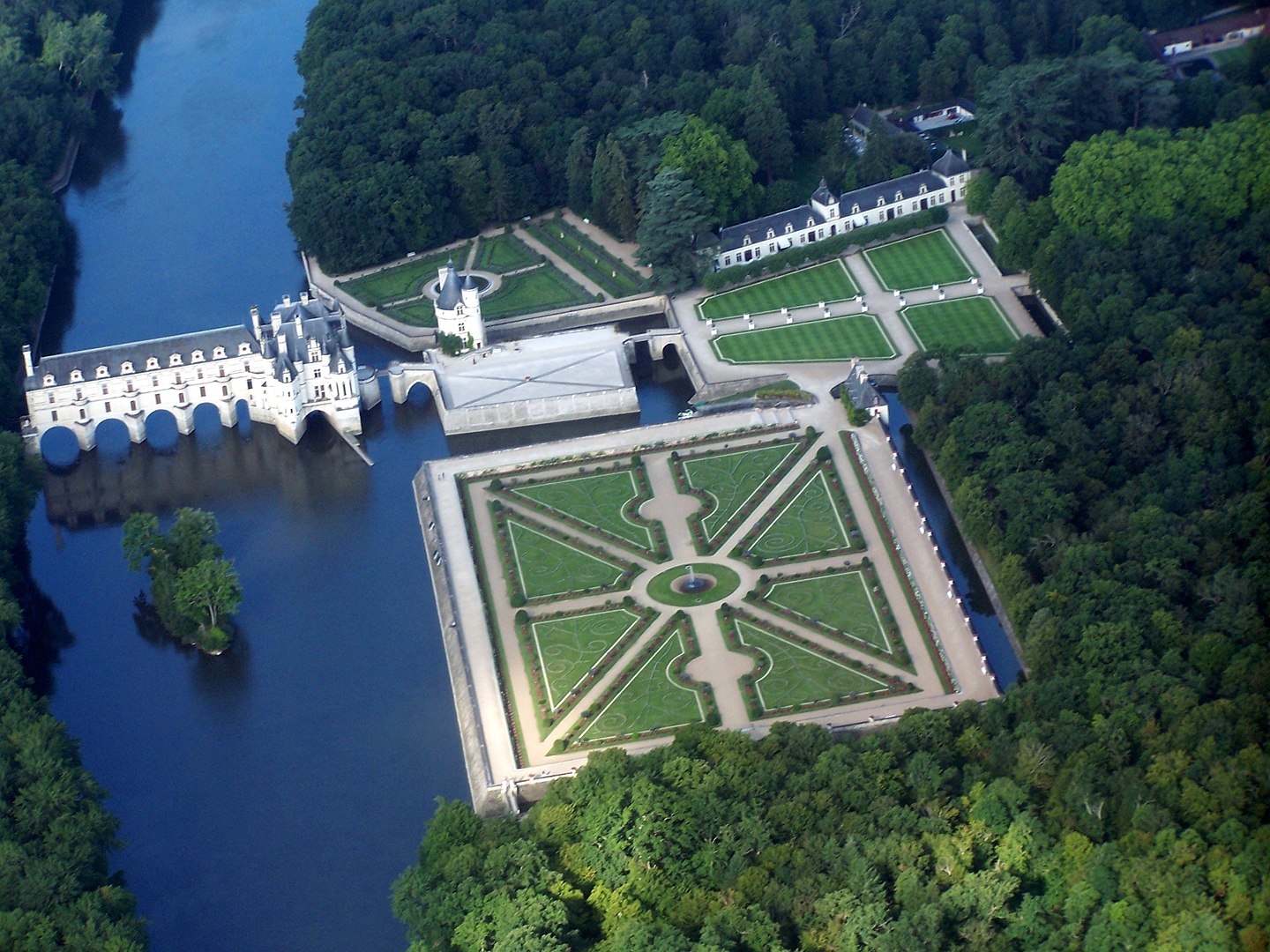 |
|
|
I believe this is a portrait of the Queen Catherine de' Medici.
|
| |
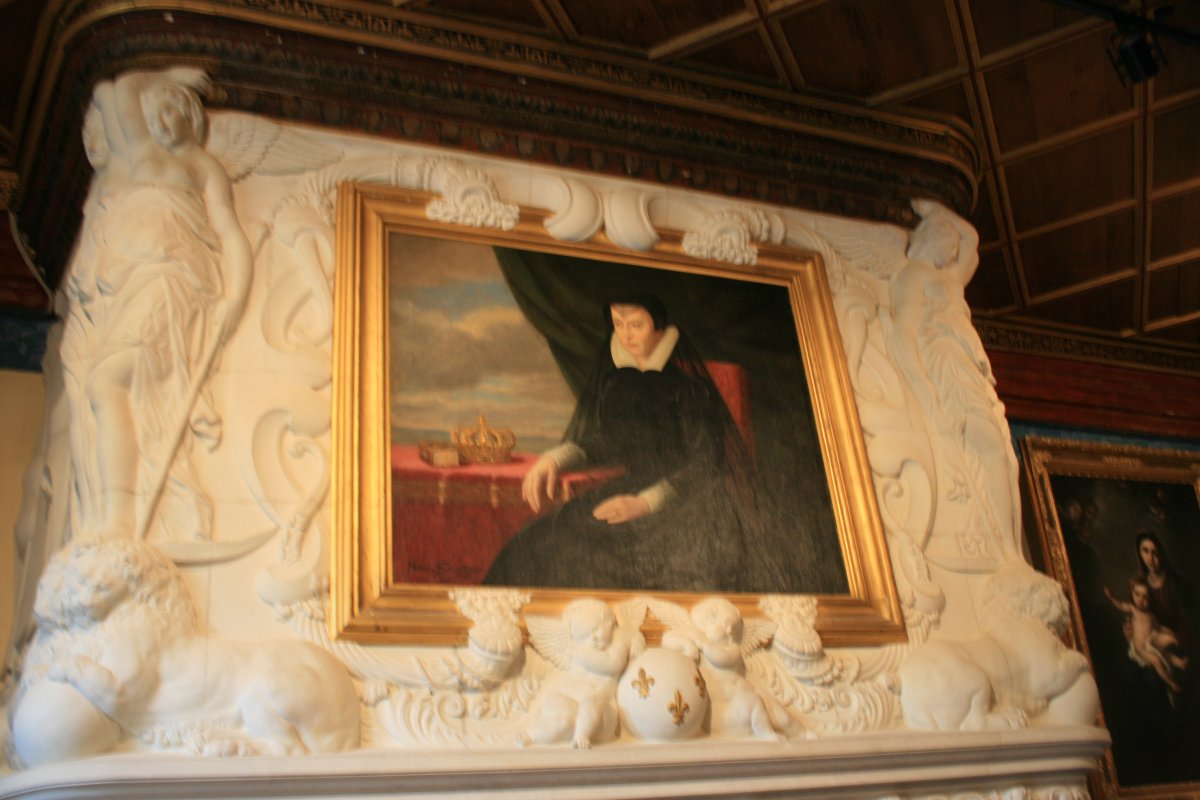 |
|
| One of the stories of the three-story Grand Gallery which spans the river. They had grand banquets here. The niches once held statues which Louis XIV commandered for his palace at Versailles. |
| |
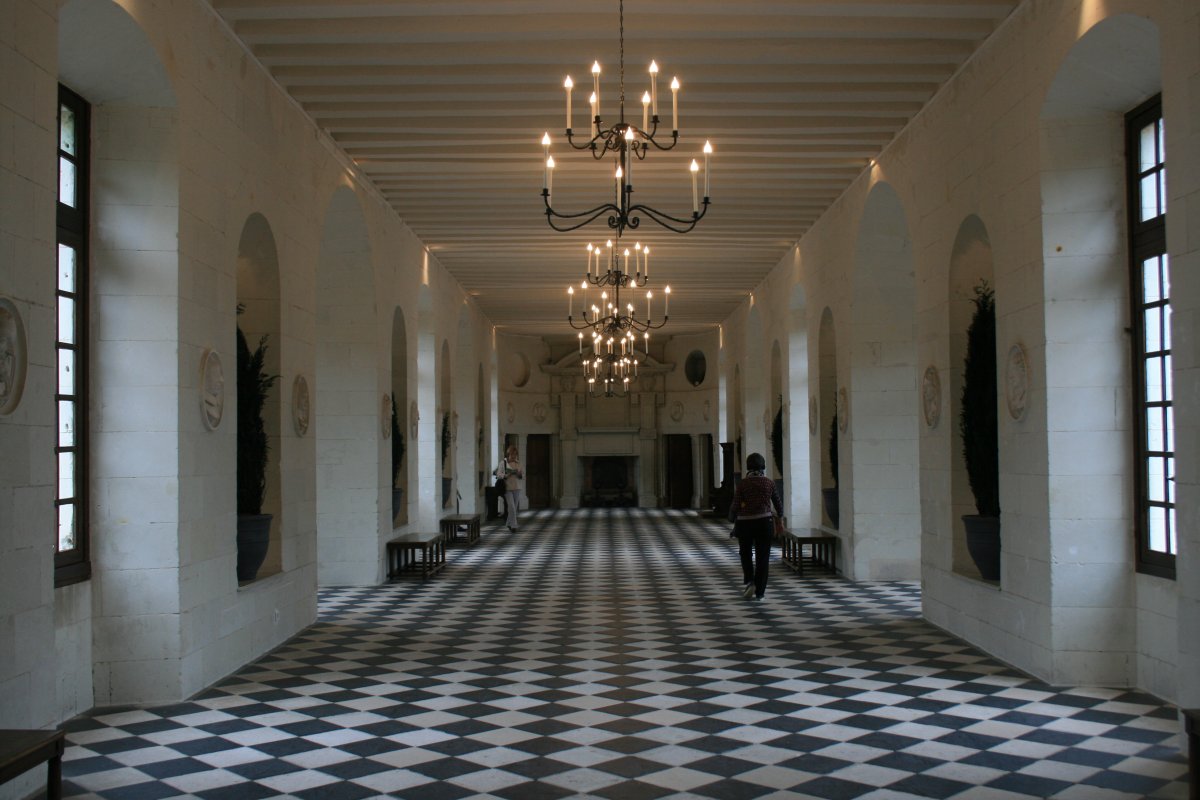 |
|
| Francis I's drawing room. |
| |
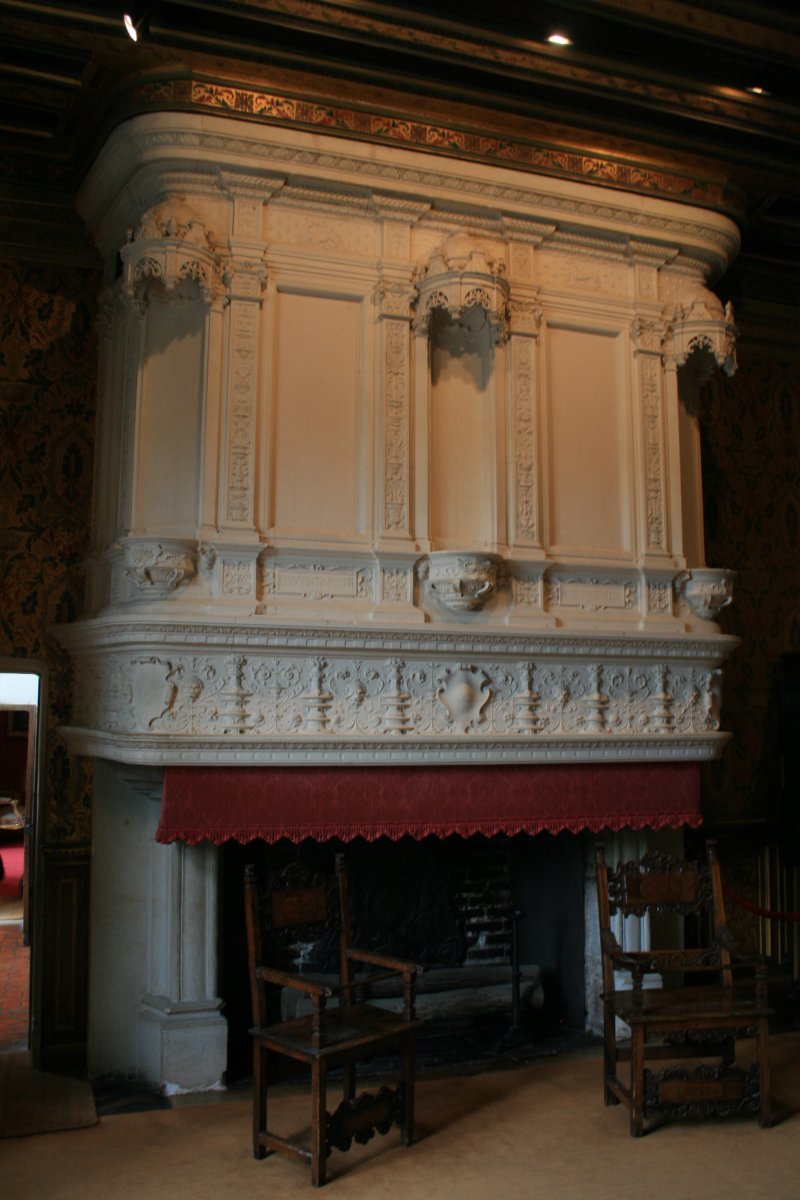 |
|
| |
| |
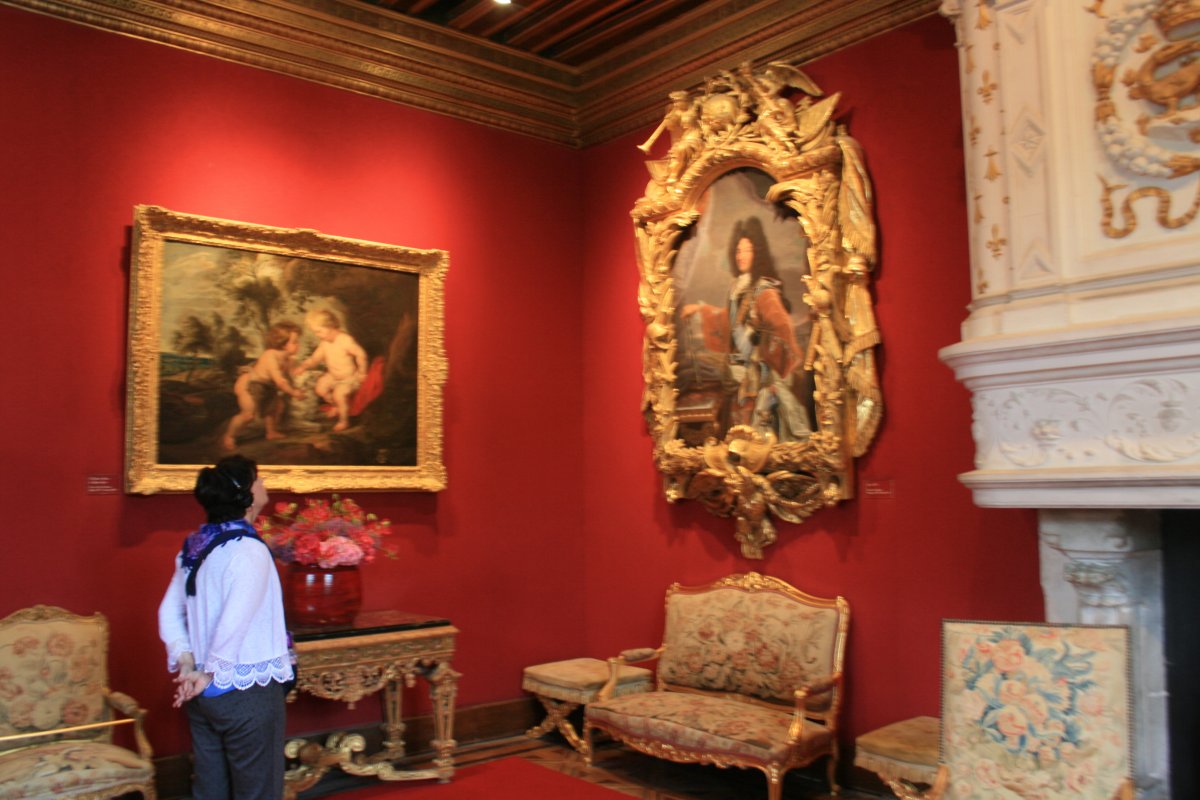 |
|
| |
| |
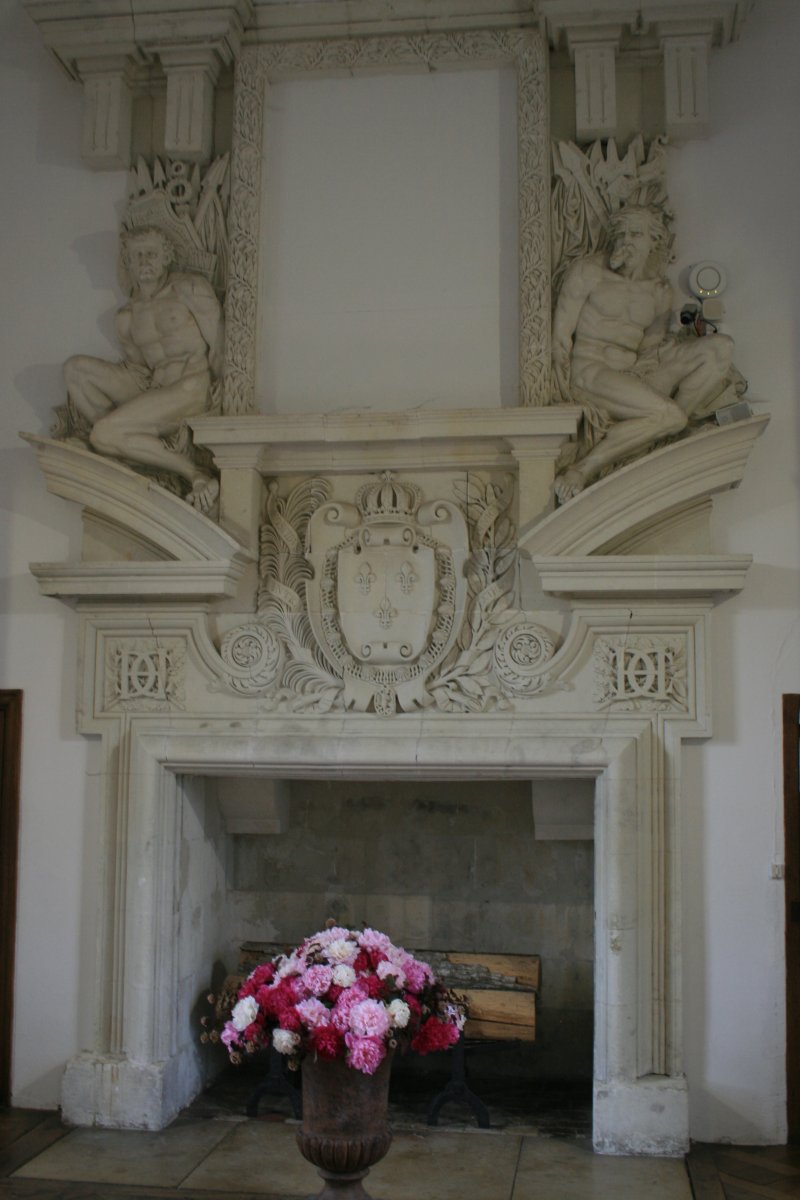 |
|
| Another story of the three-story Grand Gallery, this one was a museum with information about the Chateau. |
| |
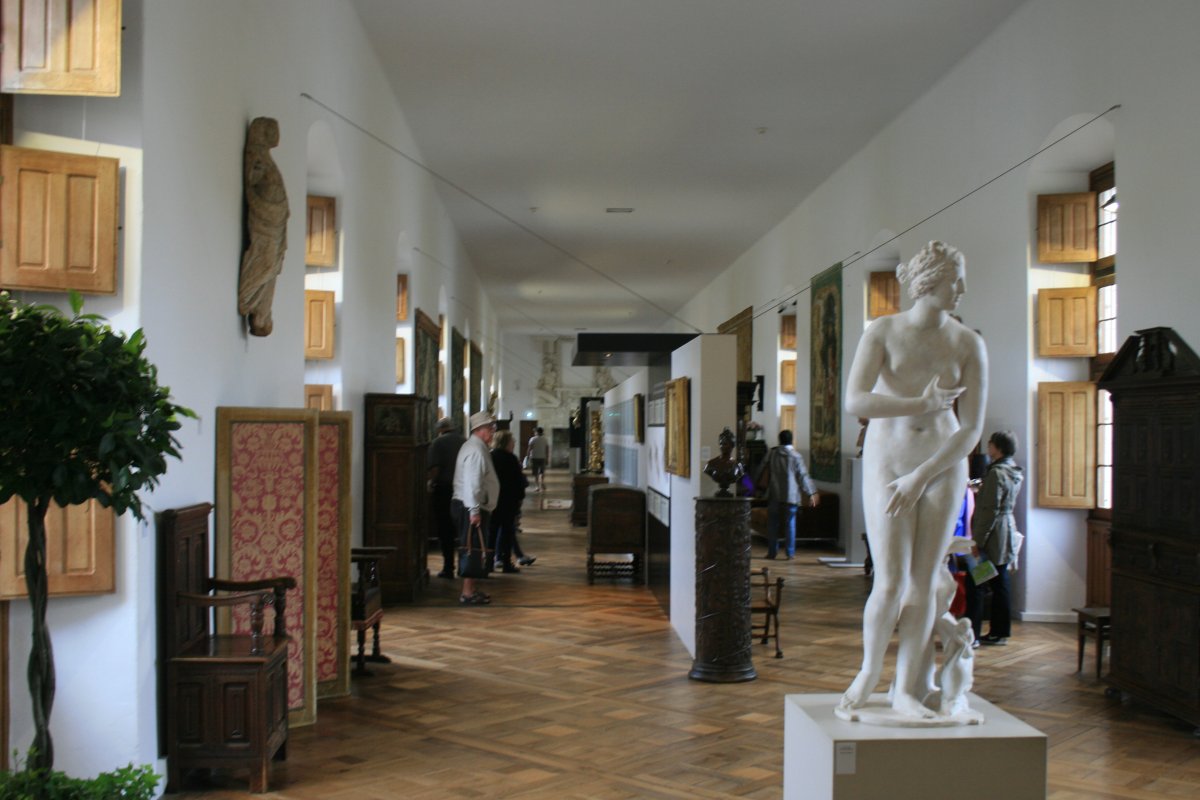 |
|
| An old painting of the Chateau. |
| |
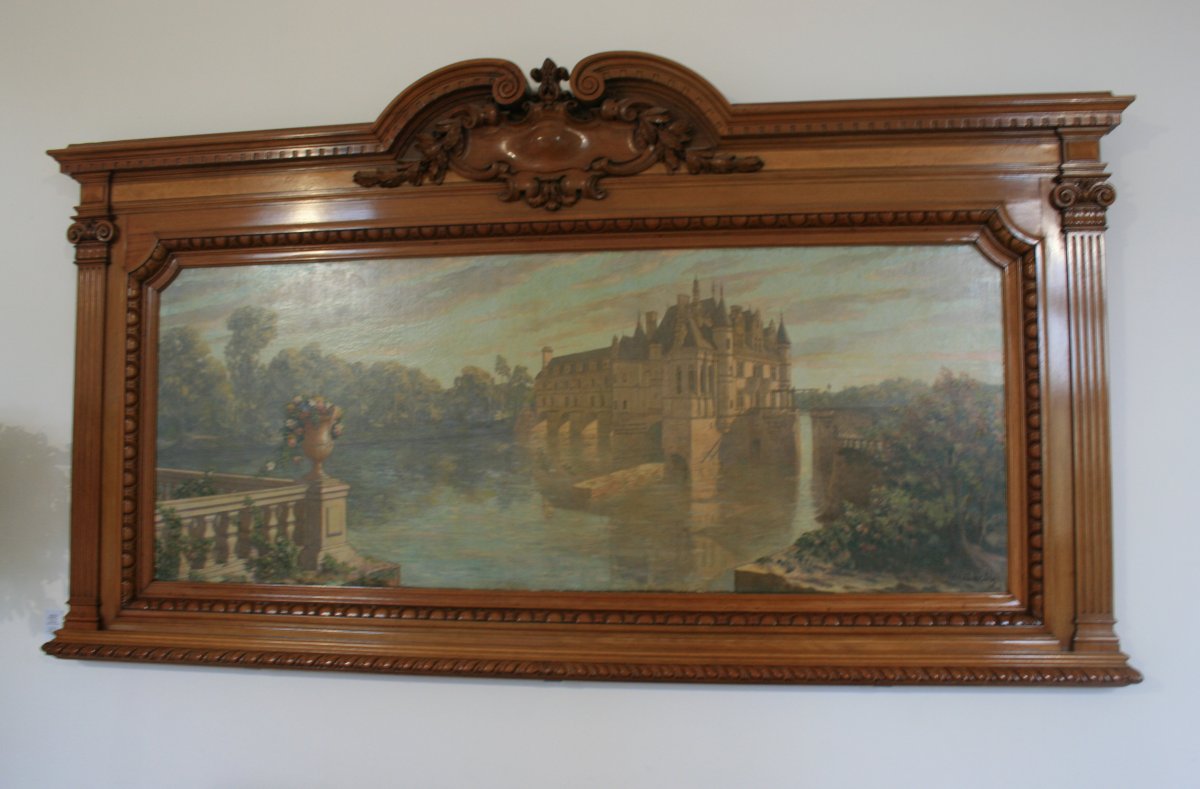 |
|
| An interesting display on the evolution of the Chateau. |
| |
 |
|
| A tapestry of the Chateau. |
| |
 |
|
|
Rooms probably didn't get much fancier than this in the 16th century. The tapestries serviced multiple purposes. They helped keep the room cozy, decorated the walls, and told a story (one favorable to the king). Each one took an average of 60 man-years to make.
|
| |
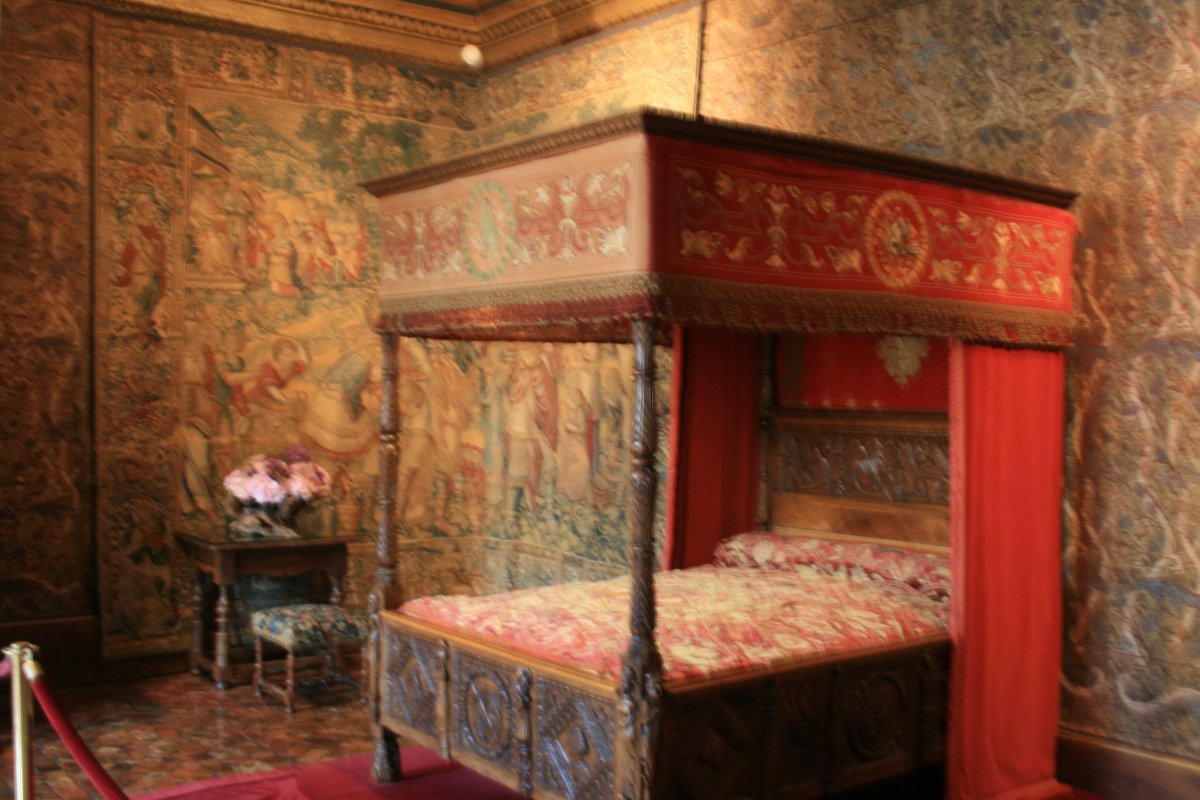 |
|
| This staircase was a very big deal back in the 16th century, because most people had never seen a non-spiral staircase before. |
| |
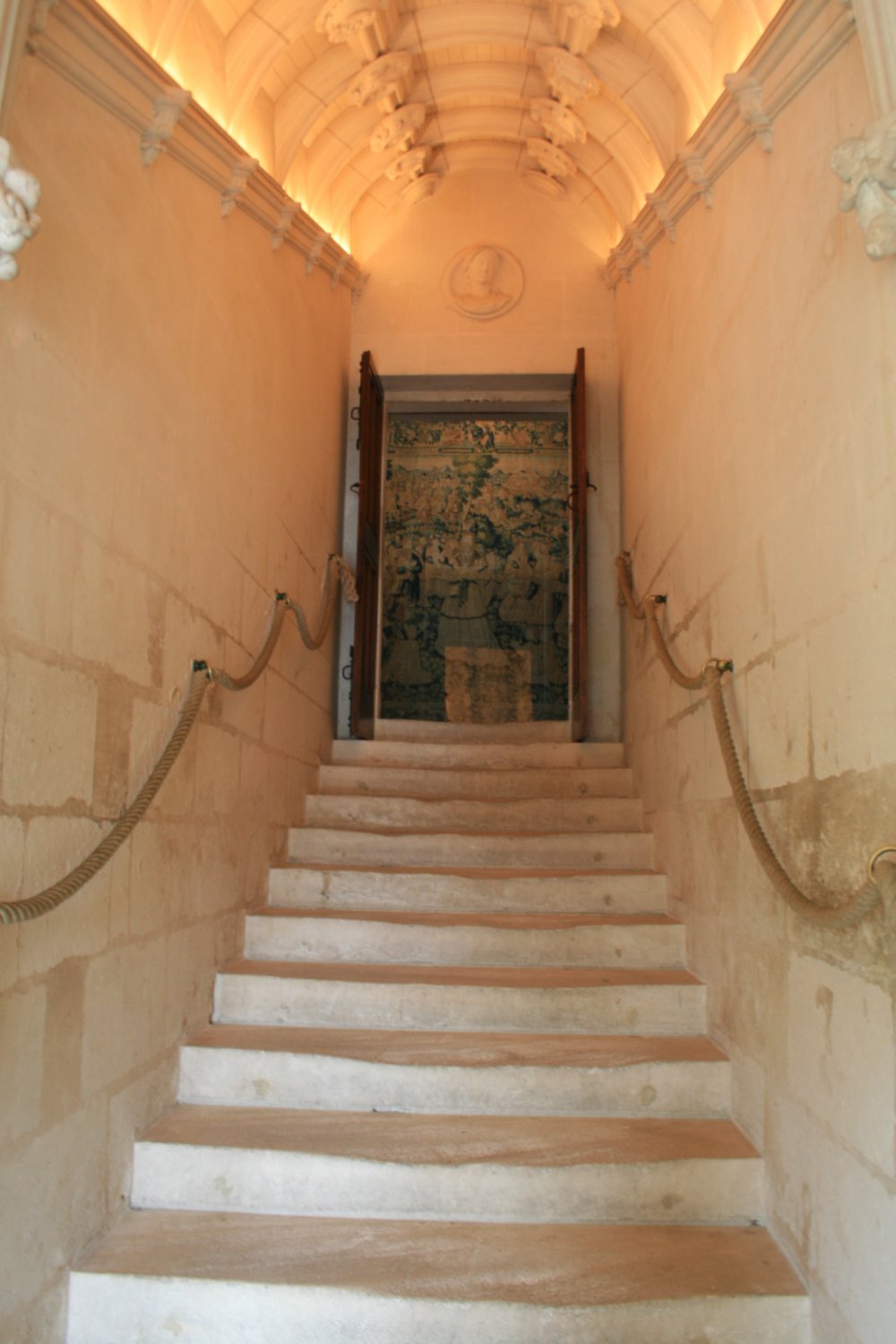 |
|
| Another building on the estate. |
| |
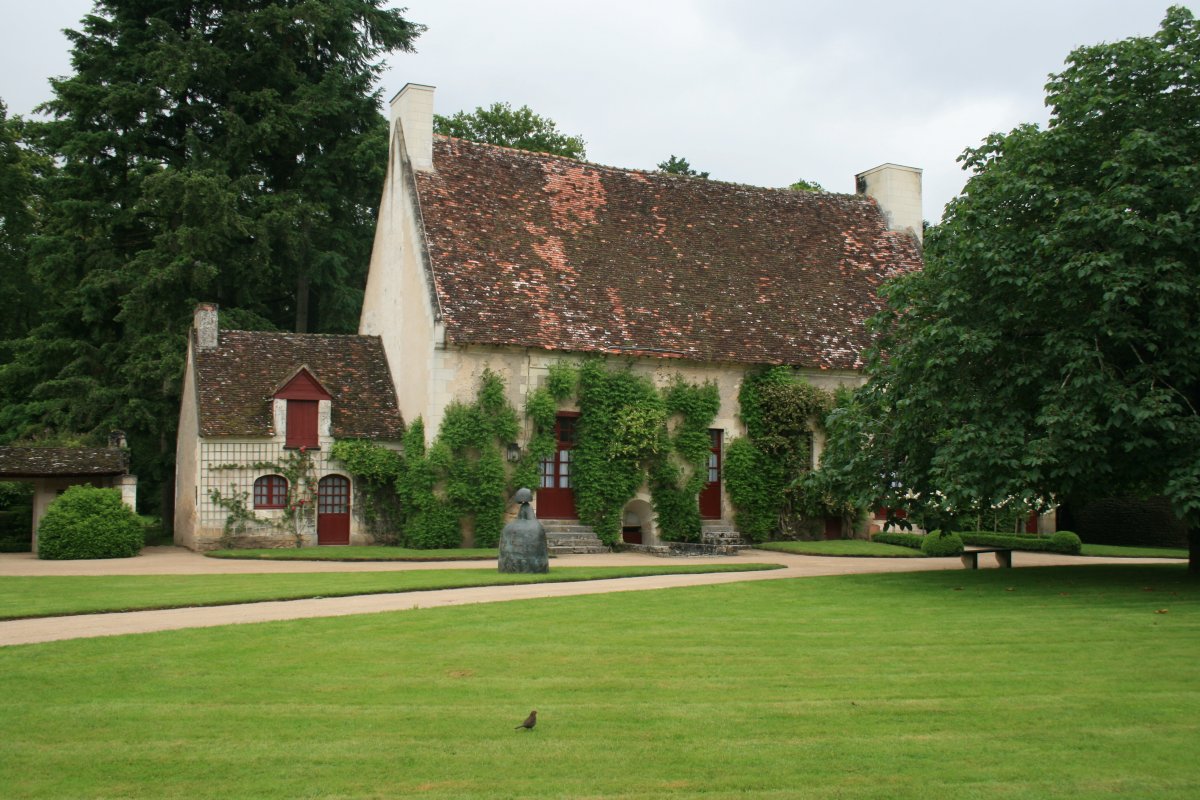 |
|
| Rose garden. |
| |
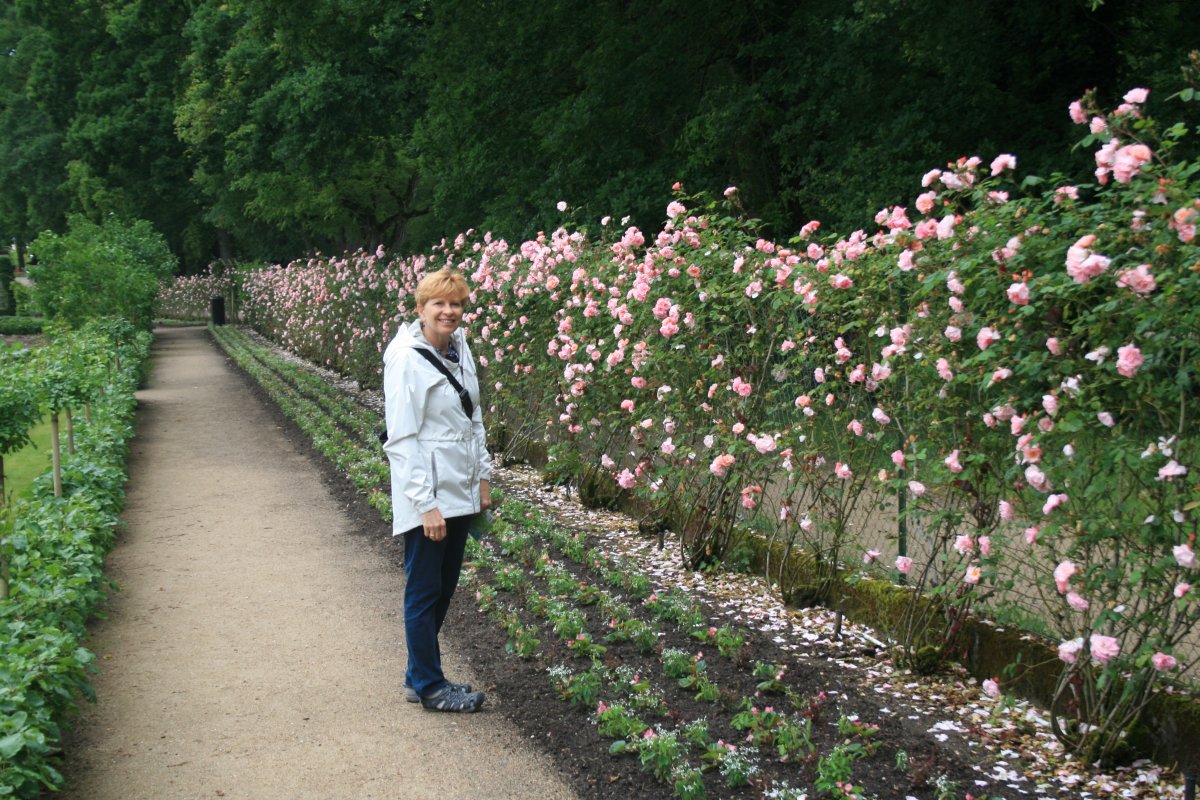 |
|
|
An Ultralight flew overhead!
We really enjoyed seeing Chenonceau. It took half a day. I would say it is a must-see if you are visiting Northern France. One of the reasons is the fascinating history behind it.
|
| |
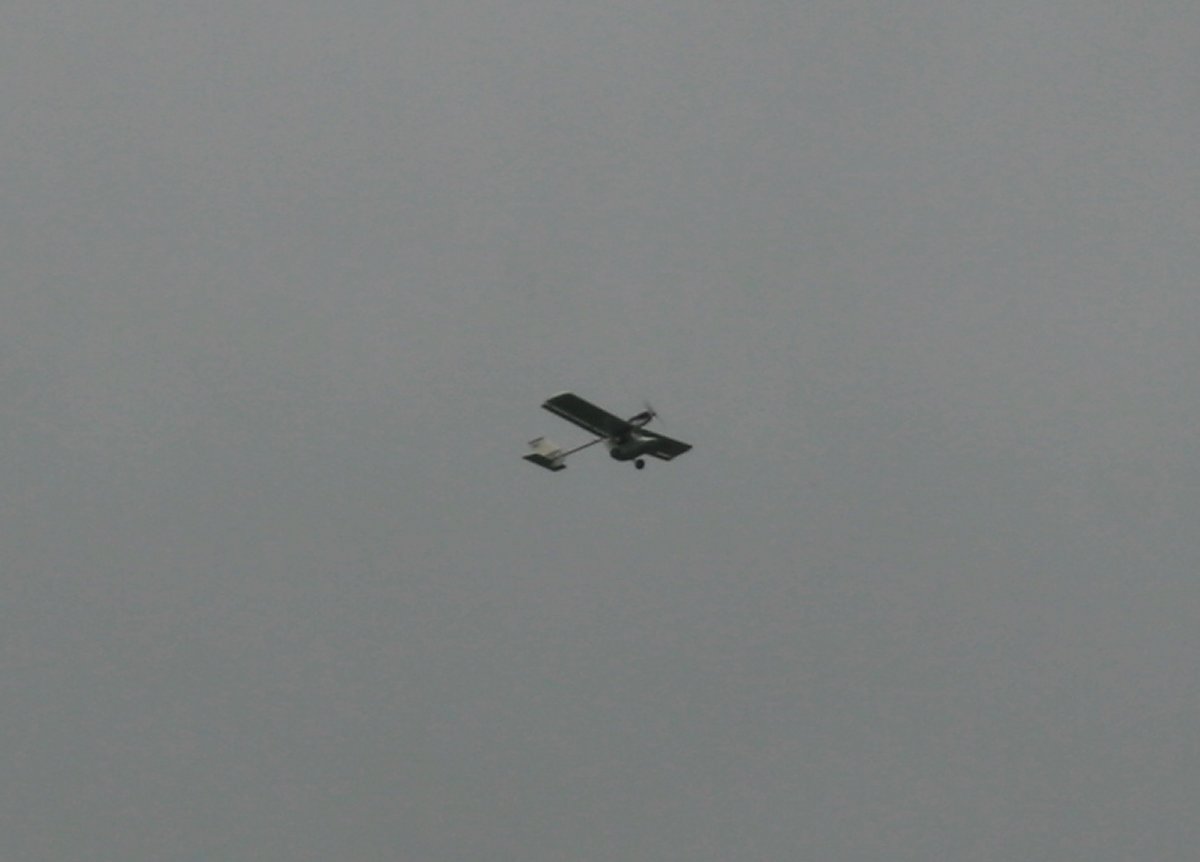 |
|
| |
| |
|
|
|
|
|
|


























